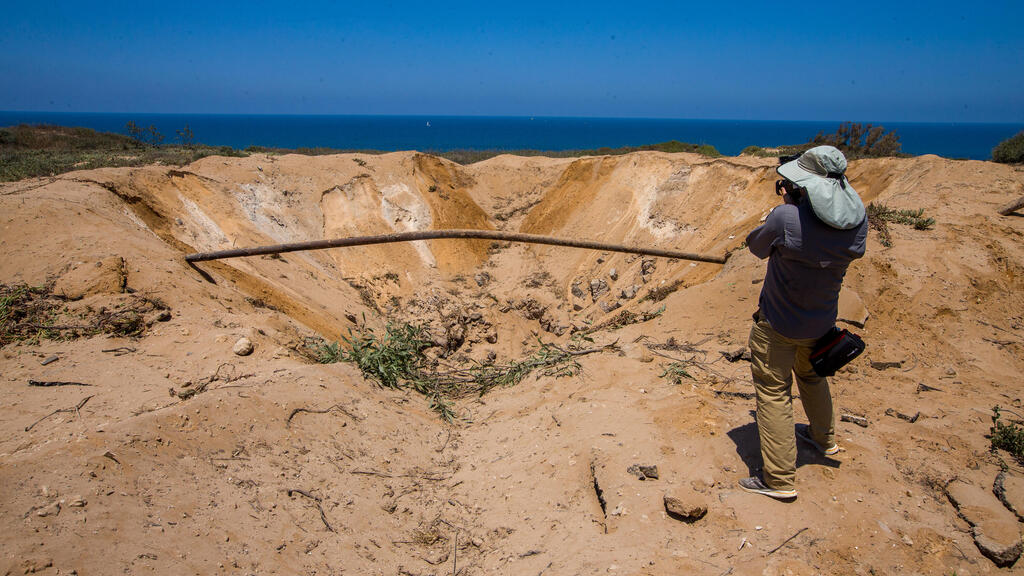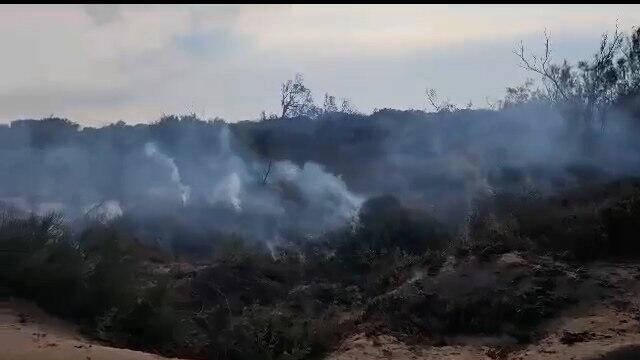Much of the soil in the small and dense state of Israel is polluted to a more or lesser degree, and with different chemicals: In many cases these are lands in the heart of cities – close to residences, schools and kindergartens; And what does the state do? Not much; Perhaps the explosion at the former ISM facility will wake up the decision makers
Prof. Adi Wolfson|Updated:06.25.23
The intense explosion that shook the area of Herzliya and South Sharon, near Tel Aviv, on Thursday evening, and horrified the residents, should not have really surprised anyone. Because beneath the surface of the abandoned IMS factory in the Nof Yam area, in one of the most expensive and desirable areas in Israel, the ground is contaminated with fuels and residues of various chemicals, as well as with explosives buried below.
The factory, which was abandoned about 30 years ago , has become a wild nature area over the years, but under the surface there is a ticking time bomb, and fuels and other substances that also seep into the groundwater in the area and pollute it, while soil gases – volatile pollutants originating from the soil or contaminated groundwater – migrate from underground to the air and can penetrate into nearby buildings.

Despite the danger to the public, the state, which is responsible for the pollution and owns the land, has not yet begun cleanup and restoration operations, even though it has promoted a construction plan on the site, which was shelved by the High Court’s decision .
A look at the national map of soil contamination, published by the Ministry of Environmental Protection about a year ago and which currently includes more than 2,200 sites , reveals that much of the soil in the small and dense state of Israel is contaminated to a greater or lesser degree, and with many different chemicals. In many cases it is land in the heart of cities, close to residences, schools and kindergartens. Moreover, in many areas land surveys have not been done or the surveys are old and out of date, so the number of contaminated sites in Israel is undoubtedly much larger, encompassing areas of thousands of dunams. A quick look at the map shows that the site where the explosion took place on Thursday in the Herzliya area does not appear on the map, probably due to secrecy, although this secret is visible to all.
In simple terms, contaminated soils are defined as those that contain polluting substances beyond the threshold value allowed in regulations. The sources of pollution are many and varied, as are the materials. The major source is gas stations and the underground storage tanks; large industrial plants, such as refineries and production facilities for chemicals or defense industries; and small workshops, for example garages, when the source of pollution is leakages into the ground from storage facilities and production processes and their emission of contaminated wastewater; and industrial and domestic waste alongside construction waste, which is dumped on pirate sites or on regulated sites which are not sealed off well.
Soil pollution in Israel is very widespread. According to various surveys, just under 90% of gas stations have soil pollution at one level or another, and this also causes pollution of the groundwater. At the same time, according to a report of the State Comptroller from 2019 some 69% of 203 monitored sites that are suspected of being contaminated, contamination was found in the water source, and in 36% of them serious and very serious infections were found.

The ground under many old and abandoned industrial complexes, or those that are still active, is also highly polluted and poses an immediate risk, even spilling over and crossing the boundaries of the factory. For example, in the area of the abandoned electrochemical industries plant in Acre, there is heavy mercury pollution, pollution that has reached the sea and from there to the fish that reach our plates. In the area of the refinery complex in Haifa, which is currently facing evacuation, there is widespread soil and groundwater contamination. But all this does not prevent the state and entrepreneurs from continuing their construction plans in the polluted areas and passing the land from hand to hand like currency in the hand of the merchant, without guaranteeing to clean it.
Although in many of the sites we are dealing with past contamination, and today the regulations are stricter, with the aim of preventing the next contamination, various soil contamination incidents have also occurred in recent years. For example, incidents of fuel spills by the Europe Asia Pipeline Company (formerly the Eilat Ashkelon Pipeline Company) in Ein Evrona, in Nahal Tzin and recently also in the Ashkelon area, the spill of acidic water from the ICL Rotem wastewater ponds into Nahal Ashlim and, just recently, the intrusion of salty water from the canals of the Dead Sea factories into part of Nahal Tzalim, as well as brine that leaked from a pipe of a plant owned by ICL for the Judean Desert nature reserve.
Despite all this, the state continues to plan facilities with the potential for pollution even in areas with high sensitivity. For example, only recently did the government approve the construction of the Kasem power plant, near the central cities of Rosh HaAyin and Kfar Kasem, despite warnings from experts that the operation of the plant, which uses gas from minerals with diesel backup, could lead to contamination of the soil and the main water sources in the mountain aquifer located in the area.
The way to identify, characterize and treat the contamination and remediation of contaminated soils is recognized, and it includes treatment of the contamination on the site itself or removal of the soil to a disposal and landfill site and/or authorized treatment plant, and the use of biological decomposition of degradable organic pollutants alongside immobilization of the metals, vaporizing volatile pollutants and more. But the problem is that, despite the current situation and the immediate danger, there is still no law in Israel to deal with contaminated land, even though the Israel Union for Environmental Defense association has been trying to promote such a law for many years. Moreover, since these are expensive and often long processes, the state, which is sometimes the owner of the land and sometimes the guiding, approving and supervising body, adds more sin to crime and repeatedly promotes construction plans in different areas of the country where the pollution has not been properly tested, and these sometimes end up in court. Therefore, it seems that the time has come to regulate the field, which has long since become a scourge, because what is sizzling and seeping under the surface has ended up exploding in all of our faces.
Prof. Adi Wolfson is a researcher at the Green Processes Center – Sami Shamoon College of Engineering and the author of the book ” Need to Live – Man, Society and Environment: Lessons from the Past and Responsibility for the Future ” (Pardes, 2016).
